Guide to The Gatherings Program
This is the blueprint for establishing The Gatherings in you community. We will review some important aspects of the organization and then present a plan of action to begin the process. The Executive Program Manager is available to help you with whatever you need. National can supply initial funding to get things started. We look forward to working with you and hope you enjoy the time you spend helping your community.
Our Vision: is to make America’s dream come true for all people. That we will live up to the ideals of our founding fathers, as expressed in the Preamble to the Declaration of Independence: “We hold these truths to be self-evident, that all men are created equal, that they are endowed by their Creator with certain unalienable Rights, that among these are Life, Liberty and the pursuit of Happiness”. That was their Day-One promise.
Our Mission: is to build a world of Respect and Inclusion through programs that bring together children of all diversities, in educational and fun experiences. To move communities away from and defeat “hate” based upon race, ethnicity, gender, sexual orientation, religious beliefs, and other ideologies. Our programs offer simple and passive methods to encourage cultural understanding and acceptance. We need to be future-ready for the next generation that will lead our country.
Editor’s Note on Definitions: We use some terms in a different way than you will find in the dictionary because it helps convey our message in a more concise way, see the Definitions Page. For example, when we use Students-of-a-Difference or Students-of-Diversity, we mean “all students”, that includes all races, ethnicities, religions, genders, sexual orientations, and cultures. In short Everyone! It’s easier than making a list each time.
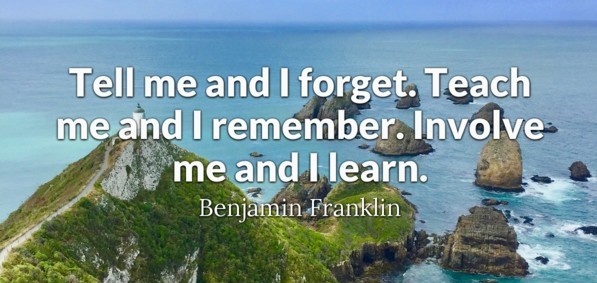
The original credit for establishing our school system goes to Horace Mann, the first great American advocate of public education. When he became Secretary of Education in Massachusetts in 1837, he set forth his vision for a system of professional educators who would teach students an organized curriculum of basic content. Our teaching methods and curriculums have been modified over the years, but the basic concept is the same: teachers teach in the classroom, and students listen. Learning Inclusion and Respect requires a different approach – only through experience can we make an impact.
Many scientists and sociologists believe prejudice and intolerance (hate-based emotions) are based upon our own self-protective (see self-protective in our definitions page) human instinct, it’s in our DNA; while others think experience and learned behavior is the reason. Our programs address both theories. We will discuss the science behind these two beliefs; but our programs have been developed so that they will render positive results regardless of which belief is correct.
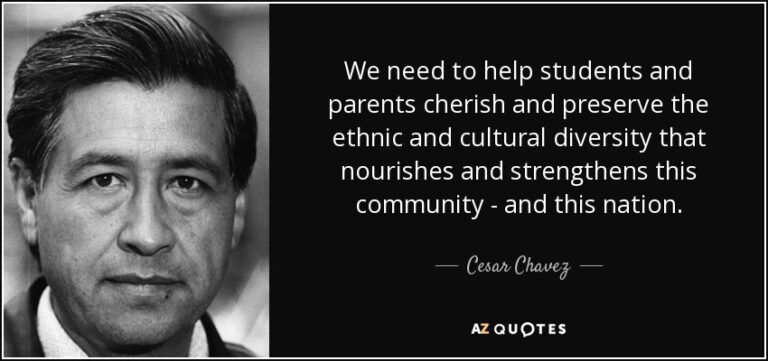
Cesar Chavez was an American labor leader and civil rights activist. Along with Dolores Huerta, he co-founded the National Farm Workers Association, which later merged with the Agricultural Workers Organizing Committee to become the United Farm Workers labor union.
Gatherings:
By now you understand the logic behind Gatherings: when people/students spend time together, doing fun and interesting activities, the natural and learned prejudices they have will be reduced, and a new mind-set of understanding and acceptance begins to emerge. Gatherings will be successful because the activities are planned and supervised by an active membership of like-minded people who are passionate about addressing the problems of a diverse society. While we offer many ideas for Gatherings, we believe it’s the people from the local Branch who know which activities will benefit their children the most and will modify our suggestions and create their own. The concepts are simple and the results are profound.
The Science behind Gatherings:
Self-Protective DNA: This psychological mechanism is “fear of the unknown”, a saying you hear very often, and one we all except as fact. An example of this self-protective instinct is when we walk into unfamiliar city streets at night or are reluctant to taste food, we are unfamiliar with. We get nervous when driving in a snowstorm because we can’t see what’s ahead, that fear of the unknown is what keeps us safe.
We are more comfortable spending time with people we have things in common with, like sports, politics, and hobbies – but also people that share the same religion, race, and gender. The saying, “birds of a feather flock together” is very accurate, and a well-accepted concept in the study of psychology. The bottom line: we spend time getting to know and develop relationships with people who are like ourselves, and stay away from people that are different than us. This self-protective mechanism that serves to protect us is the same mechanism that keeps us separate and results in racism. It’s in our DNA and cannot be taught out, that is one of the reasons we have failed to remove racism from our neighborhoods, and we believe only through experience can we change our mindset.
Homophily (/həˈmäfəlē/) – the tendency for individuals to associate with similar others – is one of the most persistent findings in social network analysis. Its importance is established along the lines of a multitude of sociologically relevant dimensions, such as sex, ethnicity, race, and social class.
Achieving Diversity: Our belief is that by creating programs for school age children to spend time together in fun and interesting activities will create the opportunity for them to dismiss their innate prejudices towards others and result in tolerance, acceptance and respect towards others; regardless of gender, language, sexual orientation, socio-economic status, age, physical abilities, religious beliefs, politics, and other ideologies.
How did this start? About two million years ago, when humans first appeared in Africa, there was no verbal language, no way to teach about the dangers that surrounded them except through experience. If a large predator came prowling by that the human never saw before and just looked out of curiosity…..bye-bye. But another human who saw the same predator got scared and ran, they lived. They lived to have children and like themselves their children survived because they were afraid of the unknown. This “fear of the unknown” is what kept them safe. It’s just animal instinct. We believe this human trait is in our DNA and racism is the nasty, logical result.
You can’t tell a ten-year-old child I’m going to teach how “not be a racist”. You cannot teach away instinct. And when you tell a child that you will teach away their racism, you are telling them they are racists and need to be fixed. What will the child think about themselves? We believe the only way for children to overcome this Self-Protective DNA “feeling” is to cause them to spend time with children-of-a-difference. That is the basis of Gatherings, groups of children spending time together doing fun and educational activities and feeling comfortable with others who are different.
Are Kindergarteners ready to participate in the Gatherings Program? Yes they are!
From the article “There Are 6 Types of Childhood Play, May 14, 2019: When kids are finally ready to play together (typically around the time they start school at age four or five), they’ve reached the final stage of Parten’s theory. This is when team sports or group performances become a lot more fun (for kids playing and for parents watching). Now they’re ready to apply the skills they’ve learned (like socializing, communicating, problem solving and interacting) to other parts of their life and become fully functioning mini adults.
There Are 6 Types of Childhood Play—How Many Does Your Kid Engage In? https://www.yahoo.com/lifestyle/6-types-childhood-play-many-131300091.html
When children are happy, they are open to all new things
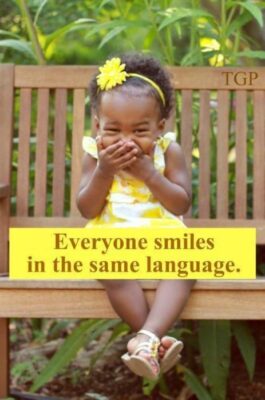
What things can you think of that children love to do?
- Children love seeing animals up close. Visit a pet shop and let them touch and enjoy the pleasure of connecting with a puppy or kitten.
- Children love listening to sounds, music and voices. Point out the sounds of the city or the music of nature during a walk in the park.
- When you take them to a Gathering, make sure you know a few stories and facts to talk about. Children love learning about new things and relate better when information is presented in a story, instead of a just a statement.

Children love to dress up in clothing that represents their heritage. It is a learning experience for themselves, their parents and other children. It brings to life the stories they were told and creates an atmosphere of understanding and acceptance.

Community Involvement
Our Education Programs create peer-to-peer relationships and that requires participation, time, and energy. We need the community to actively participate and that is a huge request we are making. Teachers and school administrators are already stretched to the limit. The volume of information that is required to educate increases every year. We cannot expect our Teachers and School Administrators to take on this additional responsibility alone, that is where Community support comes into play. We will rely on our neighbors to provide the leadership and energy to make our programs successful.
We offer Communities a Voice: Many people feel they don’t have the opportunity to have their voices heard when it comes to their children’s education. Because our programs are the combined effort of schools and community, common discourse is always taking place and everyone’s thoughts and ideas will be heard.
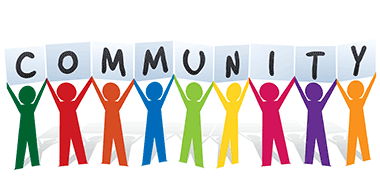
We Need Community Leaders to Manage the Collective Experience: We start by engaging leaders and influencers in the local community and continue the discourse with those who are interested. The first step the Executive Program Director will undertake is choosing the Program Manager, who will lead our programs. Together, with other members, they will develop specific goals and cultural expectations for each program, making sure all members understand, support and are focused together, thereby ensuring the program’s success. We are going to educate Diversity in a new and exciting way.
Identify Your Stakeholders: Who are the key people and how do we motivate them to support our programs? Usually there is a handful of people who are the decision makers in a community and their support is essential. If National was contacted by an interested party, they might be a key stakeholder. If so, move the process along, and find others who are influential. Prioritize who is the most important stakeholder and contact them with our program benefits. If they are sure we can help, the rest of the community will follow. Be sure to communicate often with the leadership, as they want to know about our progress and hear about the benefits we are bringing.
Discussions with Members: As our programs develop within each community, we will be confronted by our own cultural morality, and we will question what is right and wrong with our current and historical social constructs. These are good conversations to have, but always move the discussion forward in a positive direction. What was good for one generation may not be good for another: as our world becomes smaller, we will live more and more in a diverse world.
School Involvement:
Pathways are school programs and Gatherings involve the schools for some of its activities, which is why National will start by contacting the principal and school board members to find out what their interest level is. Of course, we look to community leaders and the local program manager to lead the way. In most cases we will start with two schools. The Program Manager will continue to offer our programs to additional schools, after the current school programs are up and running. There will be a tendency to “grow” the program quickly, but we need to be pragmatic and not let our enthusiasm take control.
The Challenge:
How to inspire a community to join us with our programs. How to show our Branch members they have the ability to be successful.
- We will be working with community members that may have different ideas, how do we incorporate their thoughts into our programs?
- Our programs will be self-funding, by each Branch. The National Organization will provide some initial monies, but then it is up to each Branch to provide the majority of monies needed for the programs. National will assist and provide the framework for fund-raising events.
- How to initiate our programs during and post Covid-19 crisis. Even though we would like to believe that things are back to normal, we know there is a New Normal, and we need to adapt to these changing times.
- Promote understanding between communities of color and local law enforcement, by working together with our programs.
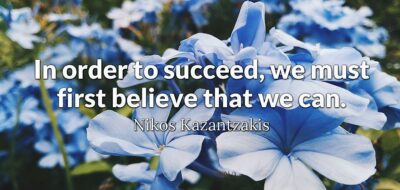
Proceed to the next section

